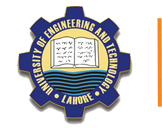Abstract: | Human Brain operates by the interconnection of billions of neurons. Every activity/thought result
in an electrical charge in brain. This electric charge is transmitted by the extensive network of
neurons and activities/functions are performed on cellular level. Every single operation in the body
is commanded by the brain in the form of electric signals/waves. Different thoughts result in
different kind of waves, varying in amplitude and frequency. These signals, also known as EEG
signals, are in the range of micro-volts. If we obtain these signals and process them, different
activities can be performed on the basis of distinguished signals. In our project, we are aiming to
control a quadcopter using EEG signals. In order to acquire EEG signals we�ve developed a
portable EEG board that fetches the brain signals through different electrodes placed on the scalp
of a person. This board is not only portable but also low cost as compared to other commercial
headsets, and gives similar quality results. The acquired raw EEG signals are then amplified,
filtered and converted into digital signals through an analog-to-digital convertor. Distinguishing
features, such as power spectral density and FFT, are extracted from purified signals using a
microcontroller i.e. RaspberryPi. After this, machine learning algorithms are applied to classify
the signals on the basis of these features. Thus, signals are classified into left, right, forward,
backward, up and down. On the basis of these classified signals, PWM signals are generated
through RaspberryPi and applied to the potentiometers present in the remote control of quadcopter.
The remote control transmits signals to the controller of quadcopter and hence the flight of
quadcopter is controlled. Thus, the flight of the quadcopter can be controlled by EEG signals.
Quadcopter flight control is one application of EEG signals. This method of EEG signal acquisition
and processing can be used for various purposes. For example, diagnosis of brain related diseases
such as, epilepsy, Alzheimer�s disease, seizure disorder, dementia, seizure, etc. Another
application of EEG signals is operating machines/robots. This application is particularly useful for
disabled and paralyzed individuals. We have operated an electronic wheelchair and a robotic arm
using EEG signals. So using this technology, any type of action can be performed by mere
thoughts. |






